How Do I Avoid Ticks While Hiking?
We all want to avoid ticks while hiking. Ticks can carry serious diseases like Lyme disease, Rocky Mountain spotted fever and ehrlichiosis.
Ticks are most active during the spring, summer and fall months. Ticks go dormant in extreme cold, but they can be active in winter months.
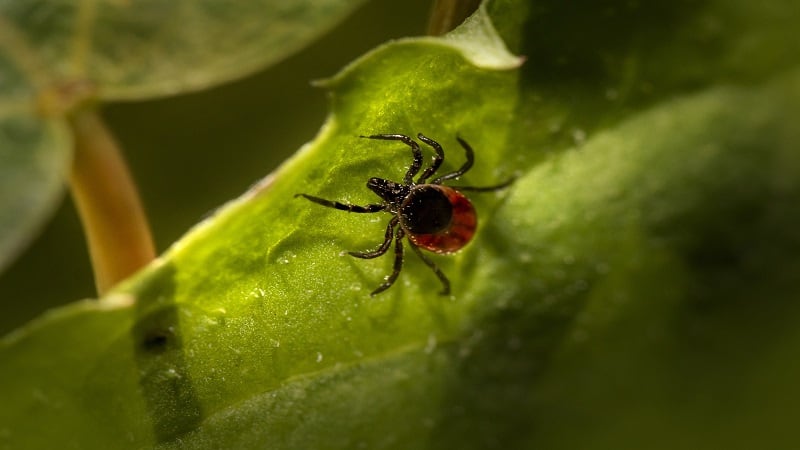
There may be affiliate links in this post. If you make a purchase, I earn a small commission at no extra cost to you. Thank you.
Before you set out for a hike, it’s good to know why ticks are so dangerous, how to keep ticks off your skin and how to repel ticks on the hiking trails.
Why Should I Worry About Ticks?
These blood-sucking insects are no light-hearted matter. A simple tick bite can lead to transmission of a variety of dangerous diseases.
While some ticks aren’t known to transmit any diseases, far more do. The diseases range from unpleasant to downright serious.
Blacklegged ticks (formerly called deer ticks) can transmit Lyme disease. This disease attacks your nervous system and lingers for years after infection.
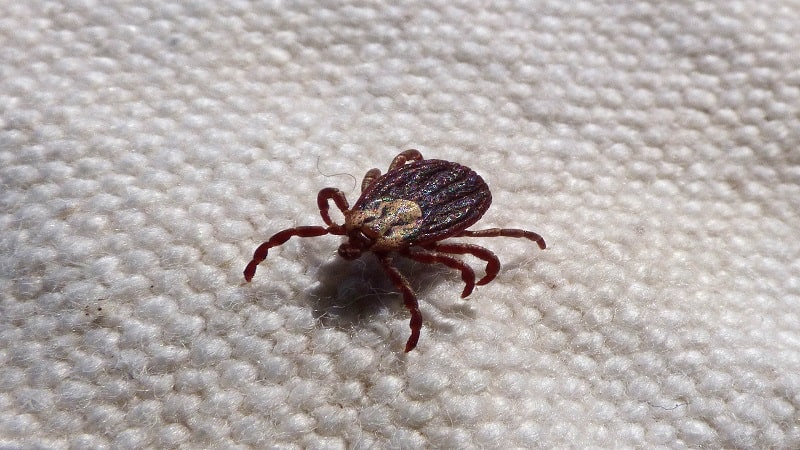
American dog ticks and lone star ticks carry Rocky Mountain spotted fever. This is considered the most dangerous tick-borne illness in the U.S.
Rocky Mountain spotted fever can cause a sudden rash, body pain and fever upwards of 103 degrees. It can also have long-term effects, like kidney failure.
Lone star tick bites can cause alpha-gal syndrome, which causes an allergy to red meat. Sufferers can develop anaphylactic reactions to all red meat.
What Ticks are Most Common in Virginia?
Virginia is home to many tick species. The most common ticks are the lone star tick, American dog tick (aka wood tick), Asian longhorned tick and blacklegged tick.
Although all of these ticks can be found all over the state, different species are more prevalent in specific regions.
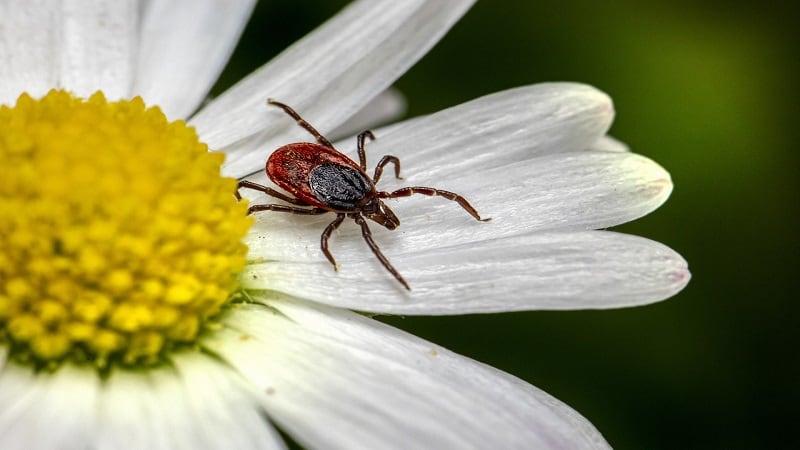
The American dog tick is found west of the Blue Ridge Mountains. The blacklegged tick is often found in the northern and eastern sections of the state.
What Should I Wear to Avoid Ticks?
Wearing the proper clothing is the first step in your defense against ticks. Proper clothing from head to toes is the best way to protect yourself from tick bites.
Even in the summer, you should wear pants and long sleeves. Wear light colors because you can spot ticks easily on light colored clothing.

In areas of dense vegetation, tucking your pants into your socks and tucking your shirt in helps prevent ticks from getting under them.
If you don’t want to tuck your pants into your socks, you can get a pair of tick gaiters that cover the gap at the bottom of your pant legs.
Ticks can’t burrow through clothing unless it’s a very loose-knit mesh. However, they’re very skilled at crawling around until they find a way inside.
You should wear a hat to cover your head and scalp. It’s best to wear one with a flap that covers your neck to your shirt.

If you find ticks on your clothing, remove them immediately. Some people swear by using the sticky side of duct tape to remove ticks on clothes.
Additionally, some people seal their pant legs using duct tape. This can work in a pinch if you don’t have tick repelling leg gaiters.
What are the Best Tick Repellents?
According to the CDC you should use EPA-registered repellents containing such ingredients as DEET, picaridin or oil of lemon eucalyptus.
These types of tick repellents are applied directly to the skin. Some people are weary about using DEET, but there are other effective options.

Picaridin is a synthetic compound made from piperine, an alkaloid present in black pepper plants. It was created as a safer and effective DEET alternative.
In addition, oil of the lemon eucalyptus tree has been proven to be effective for 4 to 8 hours at repelling ticks and preventing tick bites.
These insect repellents are applied directly to the skin and should be re-applied as often as directed on the label.
In addition to applying insect repellent to your skin, you can also treat your clothing, as well as outdoor gear like tents and backpacks, with permethrin.

Permethrin is an insecticide that is a synthetic compound that acts similar to pyrethrum, a natural insecticide found in chrysanthemums.
When applied to clothing, gear and footwear, permethrin kills ticks instead of just repelling them. However, this is just for clothing and gear, not for your skin.
How Do You Repel Ticks Naturally?
As we’ve already covered, the first step to repel ticks naturally is with your first line of defense: proper clothing worn in a certain way.
Other options for repelling ticks naturally include using insect repellents made from oil of lemon eucalyptus, or other essential oils.

In a study published in the National Library of Medicine, spearmint oil and oregano oil showed promise in repelling ticks, almost as well as DEET.
In another scientific study, 11 essential oils were studied for their effectiveness at repelling ticks in Europe. Out of the 11 oils tested, only two showed promise.

The most effective of this study were clove bud and creeping thyme, repelling 83% and 82% of ticks.
If you want to repel ticks naturally, be sure to dress appropriately and find your favorite combination of tick-repelling essential oil-based sprays.
How Can I Keep Ticks Off My Dog?
Ticks aren’t just a danger when hiking. They can also attach to clothing or your dog’s fur and bite you or your dog a few hours later.
However, keeping ticks off your dog isn’t as simple as it is for yourself. For one, you should never use human insect repellent on dogs to prevent tick bites.

Tick repellent made for humans can be toxic or even fatal to dogs. Additionally, some essential oil-based repellents can have similar effects on dogs.
Oral preventatives like Bravecto will kill any ticks that bite your dog for 3 to 4 months. But they won’t prevent ticks from hitching a ride.
When hiking, keep your dog in the center of the trail to keep them from picking up ticks. After your hike, thoroughly brush your pup to dislodge ticks in their fur.
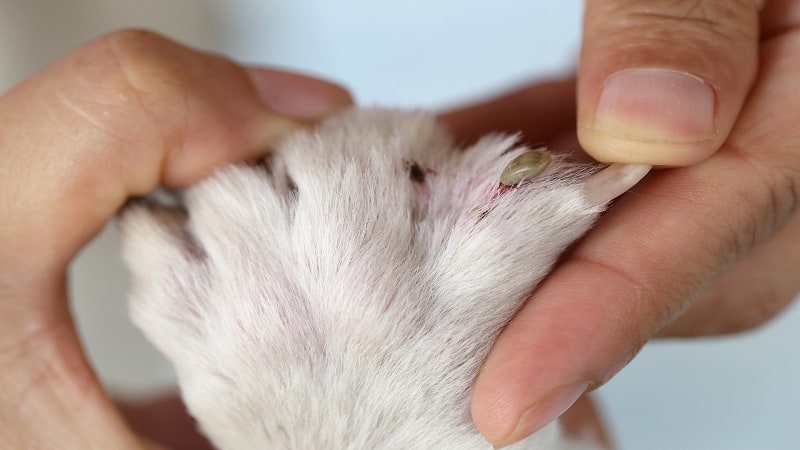
Ticks can be hard to spot on a dog, but you should still check after each time spent outside in the woods. Look for ‘freckles’ on the skin or fur.
Check under their collar, in and behind the ears, and under the tail. Also look between their toes, around the groin area, and their front legs.
How Should I Check for Ticks After a Hike?
While larger and adult ticks are pretty easy to spot, baby ticks or seed ticks can be smaller than a poppy seed, which makes them difficult to see.
Immediately after a hike, check your clothing, gear and shoes for ticks. Small ticks may just look like a speck of dirt, so look closely.
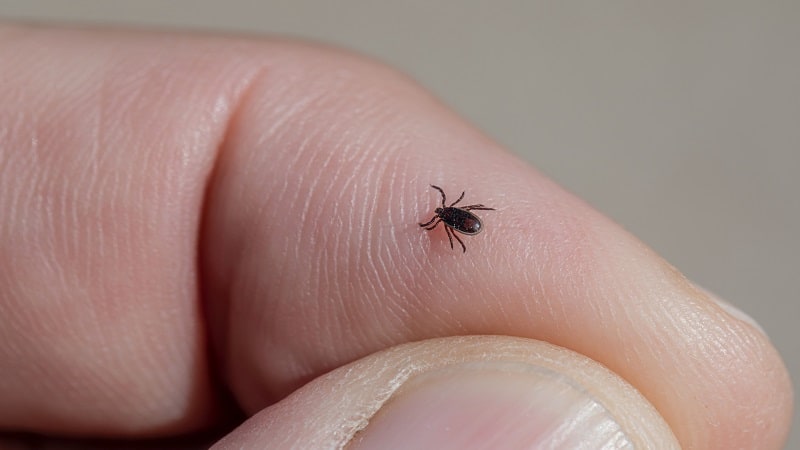
Next, check your entire body for ticks. Although they might be anywhere, there are some places where they are more commonly found.
When you check yourself, you want to check your underarms, groin and privates, behind your knees, under breasts, and along the waistband of your pants.

Run your fingers through your hair and feel your scalp and neck. Pay particular attention to the nape of your neck.
After doing a visual tick check, it’s a good idea to take a hot shower. It can help rinse off any hitchhiking ticks. It’s also a great way to unwind post-hike.
What Should I Do If I Get a Tick Bite?
If you find a tick lodged in your skin after a hiking, camping or backpacking trip, you need to remove it. Pull it out with tweezers or a tick removal tool.
It’s important to do this slowly and carefully to get the entire tick. If you do it too fast, the head or germy mouth parts may remain in your skin.

If the head or mouth parts get left behind, try to remove them as best as you can. Clean the bite with soap, water and rubbing alcohol.
If possible, get a photo of the tick so you have it to identify later if you start to feel ill or notice a rash.

According to the Centers for Disease Control and Prevention, you should follow up with your doctor following a tick bite if you start to feel sick.
Keep an eye on the area in the days following the bite. If you start to notice redness or a rash, draw a circle around it, take photos, and call your doctor.
Disclaimer: The words in this blog, and in any linked materials, are not intended as medical advice. Always seek the guidance of your doctor with any questions regarding your health or a medical condition.

Erin Gifford has completed more than 300 hikes in Virginia. She is also the author of three hiking guidebooks from Falcon Guides. Need help finding a hike? Check out the Trail Finder feature or send Erin an email at [email protected].




